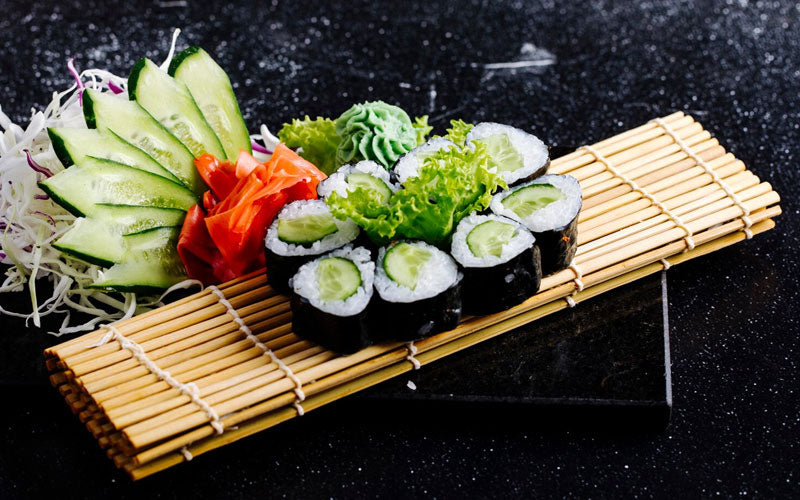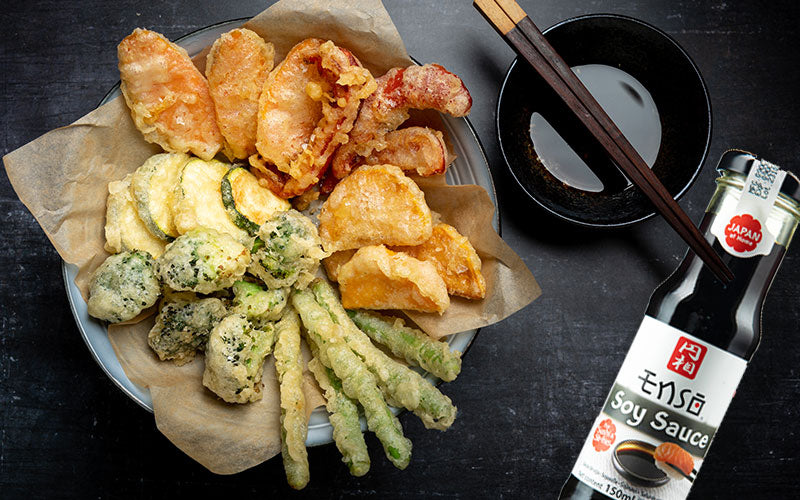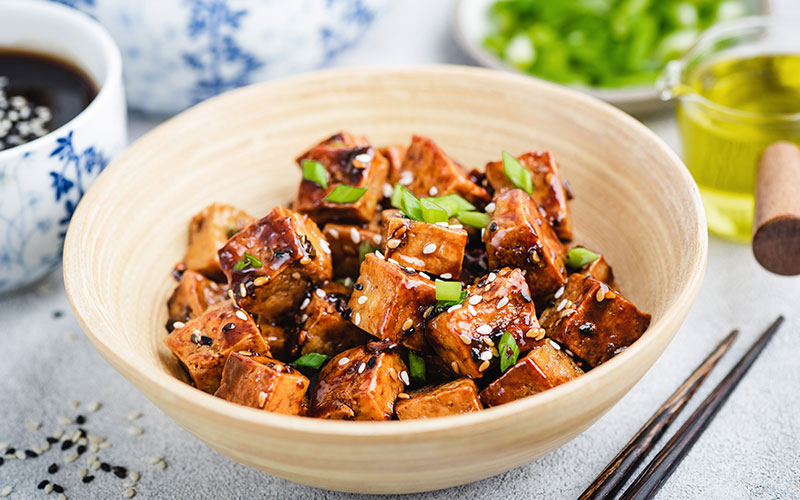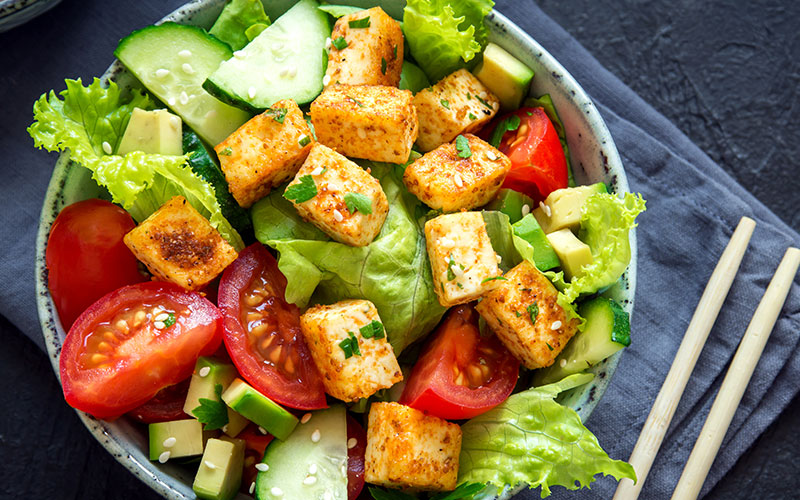20 Japanese Food for Vegetarians

If you follow a vegetarian or vegan diet, or if you simply want to incorporate more plant-based meals into your routine, Japanese cuisine offers a fantastic option. With a wide variety of vegetables and ingredients like tofu, mushrooms, and seaweed, Japanese cooking is sure to satisfy your taste buds. What's more, the dishes are incredibly flavorful and can easily be adapted to suit your preferences without compromising on taste. Here are 20 vegetarian-friendly Japanese dishes that can be enjoyed either in Japan or prepared in the comfort of your own kitchen.
1. Vegetable Tempura
Tempura is a popular Japanese dish consisting of battered and deep-fried vegetables. From crispy sweet potato to eggplant, green beans, and pumpkin, vegetable tempura offers a delightful combination of flavors and textures.
2. Zaru Soba
Zaru soba is a refreshing dish consisting of cold buckwheat noodles served on a bamboo tray. Accompanied by a soy-based dipping sauce, it's a light and delicious option, especially during the hot summer months.
3. Vegetarian Sushi Maki or sushi roll
Sushi is not limited to raw fish; there are numerous vegetarian alternatives available, including cucumber rolls (kappa maki) and pickled daikon rolls (Takuan maki). These vegetarian sushi options offer equal satisfaction and are packed with a burst of flavors.
Creating them at home is also incredibly simple. You can discover a recipe and learn how to make sushi maki here, but instead of using meat, substitute it with your preferred vegetables like cucumber, pickled daikon, avocado, or carrot.
4. Vegetarian Onigiri
Onigiri, or rice balls, are a staple snack in Japan. Vegetarian versions are often filled with ingredients like kombu seaweed, pickled plum (umeboshi), or fermented soybeans (natto). These portable and convenient snacks are perfect for a quick bite on the go.
5. Grilled Tofu dishes
Tofu, a versatile and protein-rich ingredient, plays a prominent role in Japanese cuisine. Japan offers a multitude of ways to savor tofu. For instance, Astu-age resembles a deep-fried steak and pairs excellently with salads and miso soup. Dengaku consists of grilled tofu and vegetable skewers smothered in a delectable thick miso sauce, sweet and savory in flavor.

6. Hiyakko – Cold tofu salad
Hiyakko presents a refreshing cold tofu salad, featuring silky smooth tofu adorned with simple embellishments such as grated ginger, nori seaweed, thinly sliced cucumbers, and soy sauce. This straightforward recipe is perfect for cooling down on a scorching summer day.
7. Vegetarian Ramen
Ramen, a beloved Japanese noodle dish, can be adapted to suit vegetarian diets. Look for vegetarian-specific options that feature tofu, fresh vegetables, and a flavorful broth. Vegetarian ramen can be both satisfying and comforting.
8. Kitsune Udon
Kitsune Udon is a delectable dish consisting of thick and chewy udon noodles, a flavorful and clear dashi broth, and aburaage tofu that has been expertly seasoned with soy sauce, mirin, and sugar. This delightful creation is typically enjoyed as a piping hot noodle soup. However, during the sizzling summer season, it can also be served chilled, with a generous drizzle of a refreshing dashi-based sauce.

9. Vegetable Gyoza
Gyoza, crispy pan-fried dumplings, are a popular snack in Japan. Vegetarian gyoza typically contains a filling of cabbage, onions, mushrooms, and carrots. These bite-sized delights are perfect for dipping in soy sauce.
10. Vegetarian Okonomiyaki
Okonomiyaki, a delicious pancake that is made using a mixture of flour, eggs, and cabbage, has the versatility to cater to vegetarian tastes. When preparing vegetarian variations, a wide range of vegetables can be incorporated along with toppings such as cheese, mayonnaise, and seaweed flakes. This allows vegetarians to enjoy the flavors and textures of this savory pancake while maintaining their dietary preferences.
11. Vegetarian Donburi
While many donburi rice bowls contain meat or seafood, vegetarian alternatives exist. Tamagodon features fluffy steamed eggs, tofudon includes marinated tofu, and aburafudon showcases deep-fried wheat gluten.
12. Teriyaki Tofu
A different choice from the renowned Teriyaki (Japanese grilled chicken), tofu cubes are baked and covered in a delicious teriyaki glaze. Pair them with rice for a satisfying meal. The tofu has a texture that closely resembles meat, and the teriyaki sauce adds a delightful combination of sweet and savory flavors. You are sure to enjoy this unique twist on a classic dish.

13. Shiitake Yakitori
Many Yakitori restaurants in Japan primarily specialize in grilled meat dishes. However, they often provide a variety of vegetable options, such as skewers and grilled shitake mushrooms. You can also try this cooking technique at home by marinating and grilling mushrooms (or other firm vegetables like pumpkin or carrots) with a delicious teriyaki glaze.
14. Nasu Dengaku
Nasu dengaku is a classic Japanese side dish featuring grilled eggplant slices coated with a rich miso glaze. The combination of smoky flavors and umami from the miso creates a truly mouthwatering experience.
15. Inari Sushi
Inari Sushi is a classic sushi dish where vinegared sushi rice is delicately placed inside delectable, deep-fried tofu pockets, offering a sweet and savory flavor profile. These tofu pouches are a convenient, nutritious, everyday meal option for vegetarians and vegans.
16. Miso soup
Miso soup, also known as misoshiru, is a classic Japanese soup that consists mainly of miso paste, dashi (broth), and other elements like vegetables, seaweed, and tofu. This traditional dish is a staple in Japanese cuisine and is enjoyed for its rich flavors and nourishing qualities. The miso paste adds a savory umami taste to the soup, while the dashi provides a subtle and aromatic broth base. The addition of vegetables, seaweed, and tofu enhances the soup's texture and nutritional value.
17. Daikon Salad
Japanese Daikon Salad is a simple recipe that involves cutting daikon radish into thin strips and mixing them with a Japanese-style dressing. The dressing is usually created by combining ingredients like sugar, mirin, rice vinegar, soy sauce, sesame oil, and sesame seeds. This dish is not only refreshing and delicious, but it also allows you to quickly reap the nutritional benefits of vegetables.

18. Goma Wakame Salad
The Goma Wakame Salad, which translates to "sesame seaweed," is a popular dish in Japanese cuisine. It consists of undaria pinnatifida, a type of edible seaweed, that is typically seasoned with ingredients like miso, soy sauce, mirin, sesame seeds, sesame oil, and rice vinegar. This salad is known for its nutritional benefits, as it is rich in fiber, protein, calcium, iodine, and various vitamins and minerals. Its combination of flavors and textures make it a delicious and healthy choice.
19. Vegetarian Japanese Curry
Japanese curry usually consists of vegetables such as onions, carrots, and potatoes. To enhance its heartiness and umami flavor, you can add shiitake mushrooms. Or feel free to include any other vegetables of your preference, such as Japanese pumpkins, peas, or green beans, to further enhance the dish.
20. Somen
Somen are slender wheat noodles that are typically enjoyed cold during the summer months. These noodles are believed to have a cooling effect on the body. Somen is traditionally served alongside a dipping sauce made from dashi, shoyu, and mirin. The combination of these ingredients creates a refreshing and flavorful dish.

Know Which Ingredients to Avoid While many Japanese dishes may seem vegetarian-friendly at first glance, it's important to be aware of hidden non-vegetarian ingredients. Dashi soup stock, commonly used in broths, often contains fish-based ingredients such as katsuobushi (fish flakes). To be safe, inquire about the ingredients or opt for vegetarian-specific restaurants where you can enjoy your meal worry-free.

